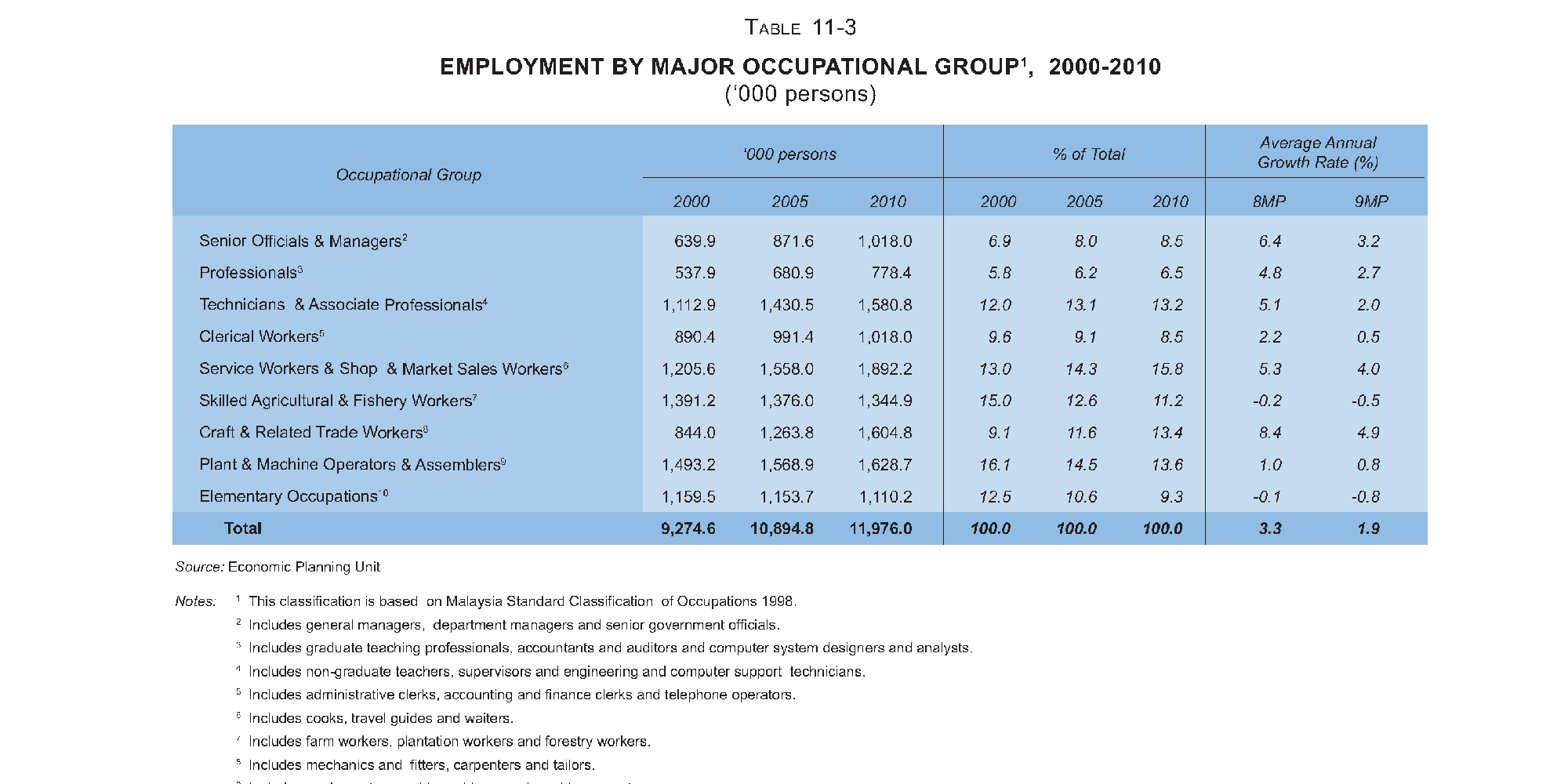Networked Economy
Under the Ninth Malaysia Plan (2006-2010) Malaysia continued to develop and strengthen economic activities within the field of ICT. Total employment in the economy is projected to register an annual average growth of 1.9 per cent during the period 2006 - 2010, from 10.9 million in 2005 to 12.0 million workers in 2010.1
As the new sub-sectors in the economy grow, so does the demand for experts and highly skilled professionals. As such, the training and retraining programs has been emphasized for both employers and employees to increase the mobility and adaptability of the nation's workforce towards knowledge-intensive and higher value added activities. Employers are encouraged to redesign and improve selected job functions and work conditions to attract local workers, including women, retirees and disabled persons.
In addition to a focus on large businesses, the Malaysian government has also recognized the contribution of small and medium sized enterprises. To further enhance and promote the activities by SMEs, the National SME Development Council chaired by the Prime Minister was established. Efforts have been invested to strengthened enabling infrastructure for SME development, building the capacity and capability of SMEs, and enhancing access to financing by SMEs. For 2006, a total of 246 programs involving financial commitments of more than US$1 billion have been identified for implementation to accelerate the development of SMEs and hence create more jobs.
There is also recognition by the government of the value of self employment. Training programs have been developed to help ICT and other entrepreneurs to develop their own businesses.
ICT Employment Opportunitie are growing, the labor force overall in Malaysia is estimated to increase to 11.5 million in 2006. In addition, the quality of the force is improving with those having tertiary education at 20% today, compared with 13.9% in 2000.
Employment is expected to grow at an average rate of 1.9 per cent per annum, contributing 1.1 million jobs during the Plan period, particularly those requiring tertiary education. The economy is expected to maintain full employment with the unemployment rate at 3.5 per cent in 2010.2
B2C Electronic Commerce is expanding rapidly in Malaysia. According to an IDC report3 Malaysia's e-commerce spending grew 70% in 2006. Malaysian consumers spent RM9.8bil via e-commerce last year, up by 43% from RM6.6bil in 2005. Consumer e-commerce spending, IDC Malaysia also said, is expected to increase at a compound annual growth rate (CAGR) of 24% between 2005 and 2010.
B2B Electronic Commerce is also growing. In this same IDC report, Malaysian businesses spent RM47.6bil via e-commerce in 2006, up 77% from the previous year. Business e-commerce spending will increase at a CAGR of 29% over the same period, said IDC Malaysia.
E-Government
The vision of Electronic Government is a vision for government, businesses and citizenry working together for the benefit of Malaysia and all of its citizens. The vision focuses on effectively and efficiently delivering services from the government to the people of Malaysia, enabling the government to become more responsive to the needs of its citizens.
Starting with the Multimedia Super Corridor, the Vision 2020 initiative has already defined seven pilot projects to enhance e-government and create a platform for effectively and efficiently delivering services from the government to the people of Malaysia, enabling the government to become more responsive to the needs of its citizens.
The 7 pilot projects of the Electronic Government Flagship Application are as follows;
1. Project Monitoring System (SPP II)
2. Human Resource Management Information System (HRMIS)
3. Generic Office Environment (GOE)
4. Electronic Procurement (EP)
5. Electronic Services (E-Services)
6. Electronic Labour Exchange (ELX)
7. E-Syariah
